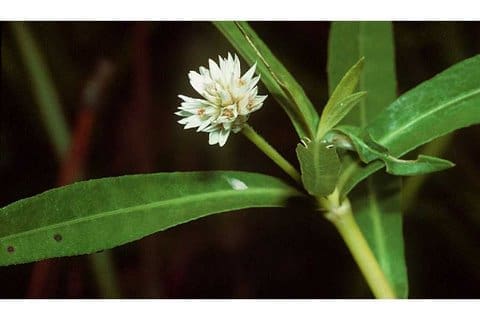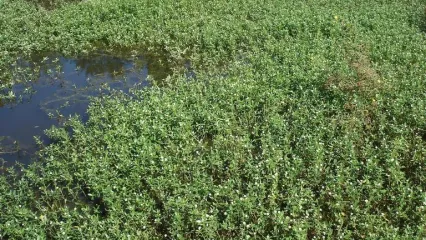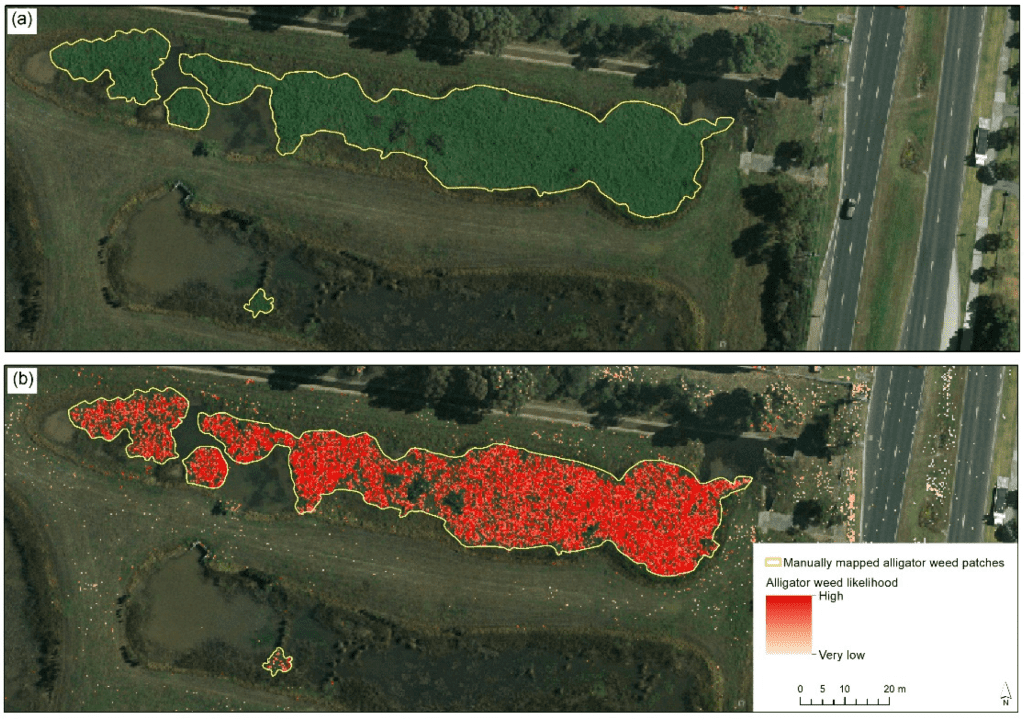Alligator weed, a persistent and invasive plant, poses significant challenges to aquatic ecosystems. You can identify an infestation through various key signs, such as the dense mats of interwoven stems that float on the surface of the water, obstructing sunlight and depleting oxygen levels. Additionally, you’ll often notice the characteristic small, white flowers clustered around the leaf axils, making the plant easier to spot. Recognizing these signs early can help you take swift action to mitigate the impact on your precious water bodies, ensuring they remain healthy and vibrant for all to enjoy. Have you ever strolled along the banks of a serene lake or paddled down a tranquil river, only to notice a tangled mess of plants choking the waterway? You might be encountering alligator weed, a prolific invasive species that poses significant threats to waterways. Understanding the key signs of alligator weed infestations in water bodies can help you identify and manage this troublesome plant, ensuring the health of aquatic ecosystems.

What Is Alligator Weed?
Alligator weed (Alternanthera philoxeroides) is an invasive aquatic plant native to South America. Recognizable by its extensive and aggressive growth patterns, alligator weed can be a major nuisance. It can prosper in both aquatic and terrestrial environments, making it incredibly versatile and challenging to control.
Characteristics of Alligator Weed
| Feature | Description |
|---|---|
| Leaves | Elliptical, opposite, 2-12 cm long and 0.5-4 cm wide, with a smooth margin and a waxy texture. |
| Stems | Hollow, often slightly fleshy, can root at nodes, and produces dense mats. |
| Flowers | Solitary, white, and papery; generally found in clusters at the ends of stems. |
| Roots | Extensive, forms numerous root systems even from stem fragments. |
Why Is Alligator Weed a Problem?
Alligator weed disrupts both aquatic and terrestrial ecosystems. It can outcompete native vegetation, obstruct waterways, and alter habitats for fish, birds, and other wildlife. Economic impacts are also significant, including reduced water quality, hindered recreational activities, and increased costs for waterway management and agricultural areas.
Key Signs of Alligator Weed Infestations
Being vigilant about the health of your local water bodies means knowing how to spot early signs of an alligator weed infestation. Let’s break down the classic indicators.
Dense Floating Mats
Alligator weed often forms dense mats on the water surface. These mats can block sunlight, degrading the water quality and affecting the entire aquatic ecosystem. If you notice thick, greenish mats floating on the water, you’re likely dealing with alligator weed.
Elliptical, Opposite Leaves
One of the easiest ways to identify alligator weed is by examining its leaves. The leaves are notably elliptical and arranged in opposite pairs along the stem. This specific arrangement can help you differentiate it from other aquatic plants.
Hollow Stems
Another distinctive feature is the hollow stems. The stems can root at the nodes and produce sprawling networks of plant material. If you pull up a segment of the plant and notice hollow stems, that’s a tell-tale sign it’s alligator weed.
White, Papery Flowers
During the flowering season, alligator weed produces small, white, papery flowers grouped in clusters at the ends of stems. These flowers are critical for identification, especially when combined with the appearance of the leaves and stems.
Reduced Water Quality
Alligator weed can cause significant declines in water quality. If you notice increased turbidity, reduced oxygen levels, or changes in water pH, it’s time to investigate further. These changes can be the result of an infestation.
Impact on Aquatic Systems
Alligator weed inflicts multiple types of stress on aquatic systems. Understanding these impacts can underscore the urgency of effective management.
Obstruction of Water Flow
The dense mats formed by alligator weed can obstruct natural water flow, leading to stagnation. This can facilitate the growth of harmful bacteria and algae, exacerbating water quality issues.
Habitat Disruption
Native plants and animals often suffer due to alligator weed’s aggressive colonization. The plant can drastically alter habitats, making the environment unsuitable for native species.
Economic Costs
Managing alligator weed infestations can be expensive. From mechanical removal to chemical treatments, the costs add up quickly. Additionally, impacted water bodies may see declines in recreational uses like fishing and boating, which can have economic repercussions for local communities.

Prevention and Early Detection
Prevention and early detection are crucial in managing alligator weed infestations. Here are some measures to help keep this invasive species under control.
Regular Monitoring
Regular monitoring of water bodies can help catch infestations early. Keep an eye out for the key signs discussed above, and consider working with local environmental groups to establish a monitoring routine.
Education and Awareness
Educating community members about the dangers of alligator weed and how to identify it can help. When more eyes are on the lookout, the chance of early detection increases.
Proper Disposal of Plant Material
If you come across alligator weed while enjoying a water body, don’t just discard it back into the water. Proper disposal procedures, such as bagging and taking the plant material to a designated disposal site, are essential.
Methods of Control
Once an infestation is identified, several methods can help control alligator weed. Each method has its pros and cons, and the choice often depends on the severity of the infestation and the resources available.
Mechanical Control
Mechanical methods involve physically removing the weed. While it can be effective for small infestations, it’s labor-intensive and can be costly for larger areas.
Pros
- Immediate results
- No chemical use
Cons
- Labor-intensive
- Can be costly
- May not eradicate root fragments, leading to regrowth
Chemical Control
Herbicides can provide effective control of alligator weed. However, they can also have unintended impacts on non-target species and water quality.
Pros
- Effective for large infestations
- Can provide longer-term control
Cons
- Potential harm to non-target species
- Chemical residues can affect water quality
Biological Control
Biological control methods involve introducing natural predators or diseases that specifically target alligator weed. This can be an effective and environmentally friendly option.
Pros
- Environmentally friendly
- Can provide sustainable long-term control
Cons
- Initial implementation can be slow
- Requires ongoing monitoring

Best Practices for Management
Managing alligator weed infestations involves integrating multiple control methods and adopting best practices to ensure long-term success.
Integrated Pest Management (IPM)
IPM strategies combine biological, chemical, and mechanical methods in a balanced approach. By integrating different tactics, you can reduce the likelihood of resistance and achieve more sustainable control.
Public Involvement
Community involvement is crucial for managing and preventing alligator weed infestations. Encourage local stakeholders, property owners, and recreational users to participate in monitoring and control efforts.
Adaptive Management
Conditions can change, requiring flexibility in your management approach. Regularly evaluate the effectiveness of current strategies and be prepared to adjust as needed.
Long-term Maintenance
Even after an infestation is brought under control, ongoing monitoring and maintenance are essential. Small patches can re-emerge, and staying on top of the situation can prevent larger outbreaks.
Success Stories and Case Studies
Let’s look at a few real-world examples where effective management of alligator weed has made a difference.
Case Study 1: Lake Smith
Lake Smith, a popular recreational lake, experienced a severe alligator weed infestation. By employing a combination of mechanical and biological control methods, the local government successfully reduced the infestation. Public education campaigns helped ensure the community’s continued vigilance.
Case Study 2: River Town
River Town faced economic decline due to obstructed waterways from alligator weed. A targeted IPM approach, including chemical treatments and introducing natural predators, restored the waterway’s health. The local economy rebounded as recreational activities resumed.
Case Study 3: Wetland Preserve
A wetland preserve saw significant habitat disruption due to alligator weed. A collaborative effort involving local environmental groups and government agencies implemented mechanical removal and public awareness campaigns, preserving the native species and improving water quality.

The Future of Alligator Weed Management
Ongoing research and technological advancements promise to enhance our ability to manage alligator weed infestations. From genetic studies that identify plant vulnerabilities to technological tools that improve monitoring, the future looks brighter for controlling this invasive species.
Conclusion
Alligator weed is a serious threat to water bodies, and early identification and intervention are crucial for effective management. By understanding the key signs of alligator weed infestations and employing a combination of control methods and best practices, you can help preserve the health and enjoyment of aquatic ecosystems. Stay vigilant, get involved, and make a difference in combating this invasive plant.
